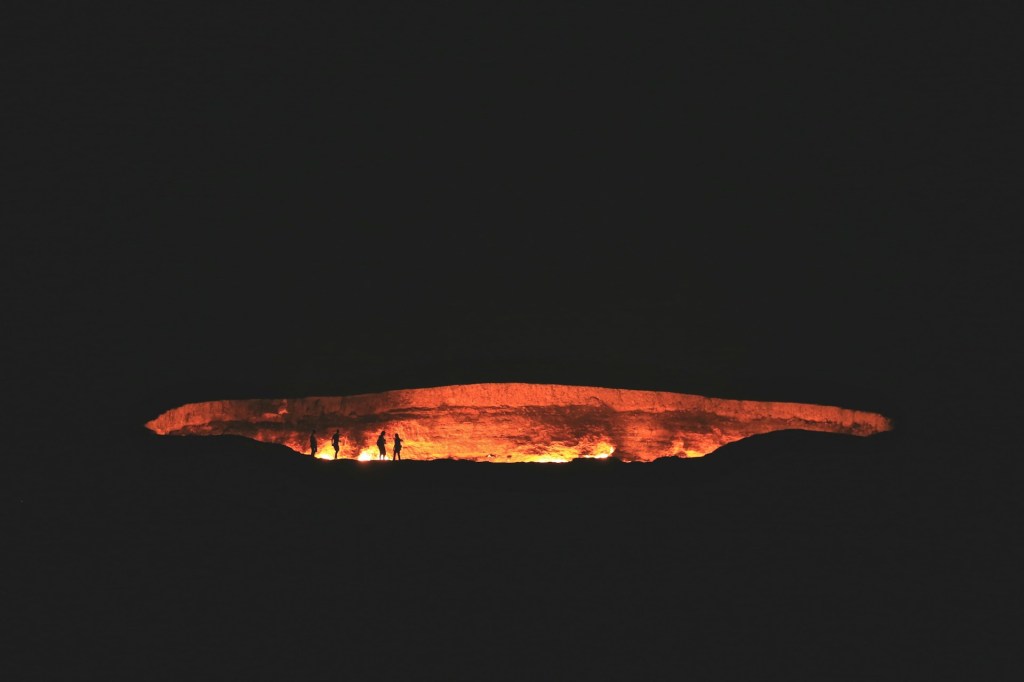The fire that burns forever in the Gates of Hell could finally burn out
The fire that has been burning for over 50 years at the Darvaza Crater in Turkmenistan emitting harmful gases to the atmosphere could finally stop.

Image by Ybrayym Esenov
The Darvaza Crater which is 20 meters deep and 60 meters wide is located in the city of Ashgabat in Turkmenistan. Caused by a collapse of a gas drill in 1971, the crater is said to have been burning fire and emitting harmful gases into the atmosphere ever since. Thus, attracting the nickname ‘Gates of Hell’. However, the latest data by FlareIntel which tracks every gas flare worldwide via satellites shows a 50% reduction in these emissions.
During an exploration of hydrocarbons in Turkmenistan which has the fourth largest reserves of natural gas globally, geologists accidentally collapsed the roof of a large natural gas reserve opening up the Darvaza Crater.
With harmful gases such as methane being emitted from the crater due to the opening created, experts at the time sparked a fire in the crater hoping for the gas to burn out faster, and stop the emissions within a few weeks.
However, the plan was not successful and the crater has been on fire ever since due to another underground gas reserve pumping gas into the crater which stops the fire from burning out. Since then, the crater has become a global hotspot for methane emissions and a tourist attraction with the Guinness World Records identifying the Gates of Hell as the longest-burning methane crater in the world.
After over 45 years with no action being taken to close the crater, the former President of Turkmenistan Gurbanguly Berdymukhamedov launched a project to create a new gas drilling to extract the gases from the natural reserve which pumps the Gates of Fire in 2022 due to increasing concern worldwide over carbon dioxide and methane emissions. Through the project, the government also hoped to avoid the wastage of natural resources by utilising this gas to produce more energy.
“We are losing valuable natural resources for which we could get significant profits and use them for improving the well-being of our people,” said former President Gurbanguly Berdymukhamedov when launching the project.
According to the latest satellite data, the project has so far been successful in reducing these harmful emissions as the crater now burns 50% less gases since August 2023. While most of the methane gas emissions of the Darvaza Crater are burnt into carbon dioxide (CO2), it is believed that the crater still emits some levels of methane into the atmosphere.
With methane being 80 times more powerful than CO2 in driving global warming within the first 20 years of its emissions, any reduction of the emissions from the Darvaza Crater is a significant achievement on the road towards achieving net zero emissions by 2050. However, Turkmenistan has a long way to go in terms of achieving this target as it emits the most amount of methane during oil and gas production worldwide according to the International Energy Agency.


